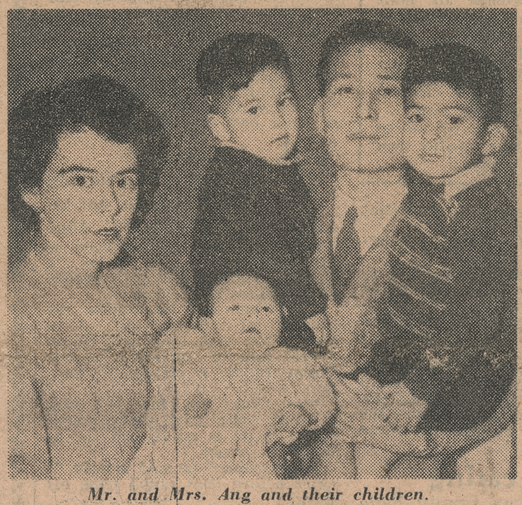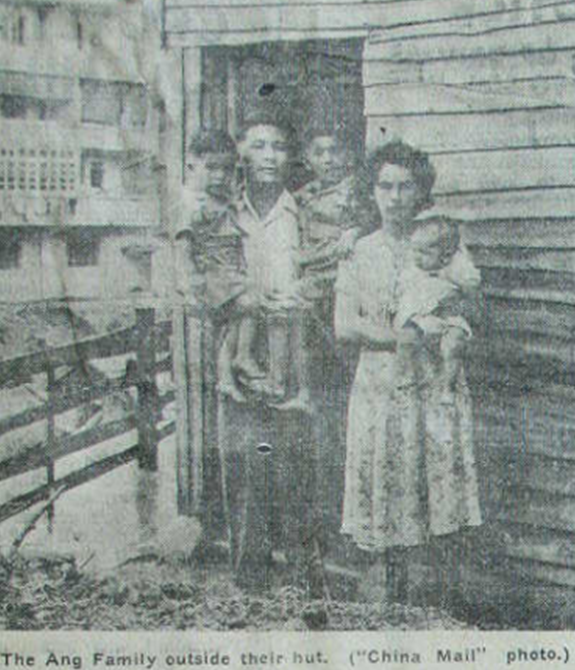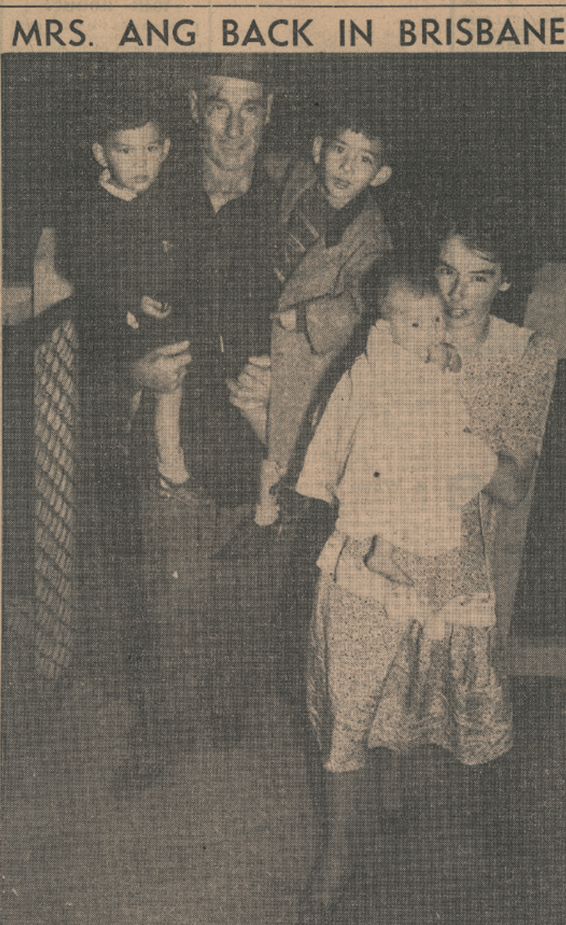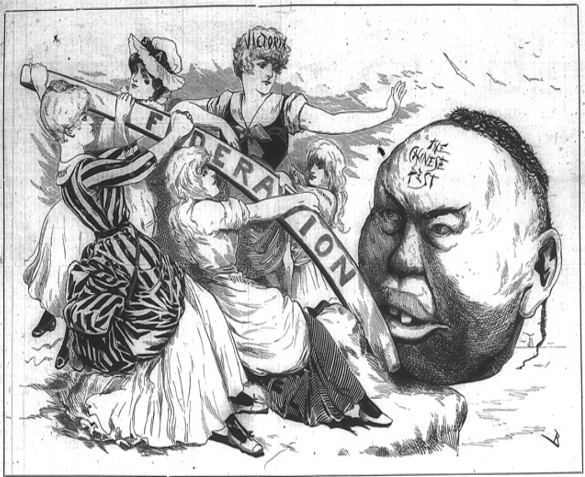The Ang family and the Wartime Refugees Removal Act
By Stephanie Ryan, Research Librarian | 10 February 2021
The Australian colonies became a Commonwealth in 1901 with a key unifying factor being a determination to keep Chinese hordes out of a largely empty Australia, but the Second World War ensured there were challenges ahead.
Antonio (Tony) Ang was born in New York in 1914-15 or in/near Hong Kong depending on which records are consulted in the National Archives files on him. As a young seaman, he arrived in Western Australia, a quartermaster on the Nellore, in March 1942, three months after the Japanese attacked Pearl Harbour and the Pacific war began. Whether he missed the boat or deserted, the result was that he was in Australia, like approximately 2 000 other Chinese, for the duration of the war. He joined the Australian Army briefly, was honourably discharged and joined the Civil Construction Corps at Bulimba, Brisbane where a Chinese camp was based. Soon Marjorie Pettit of Bulimba and Tony Ang met, married in 1944 and by 1949 had three Australia-born children.
At war’s end Tony Ang, and other Chinese war refugees, were targeted by Australian Immigration Minister, Calwell. Most returned to China uncomplainingly, but some had formed families and a new way of life. In 1949, under Calwell, the Wartime Refugees Removal Act gave the Immigration Minister wide discrimination in deporting refugees. Tony Ang required 3 month permits to remain until he was eventually threatened with deportation. His former supervisor at the Bulimba Chinese, Mr Sanderson reported in January 1946 to the immigration authorities that Tony Ang was ‘sober, reliable and energetic’ in his work as foreman supervising more than 200 men constructing riveted steel barges for the US Army. He wanted him to remain in Australia where he was currently working as a welder for him at Chermside. National Archives of Australia files show an unrelenting pursuit of Tony Ang.

Courier Mail 20 August 1949 p1
This photo, taken before they left Brisbane, was used in items about the Angs.
The family left Brisbane on the Changte 30 June 1949 for Kowloon, Hong Kong without a future home or job. Mrs Ang described what life was like living mainly on Chinese food, boiled fish and rice, with the boys given Australian powdered milk.

China Mail 11 August 1949, courtesy National Archives of Australia
She said: 'Ever since we moved into this hut the three boys have been constantly ill with coughs, boils on their bodies, and heat rashes.' Sunday Mail 14 August 1949 p1 She mentioned ‘the stench from a drain just outside the window which permeated the hut’. Later she said, ‘The place was infested with mosquitos, spiders and ants, and I was terribly worried about my children's health.’ Her most excoriating comments were for the government as she asked for money to return to Brisbane with her children: ‘But I also tell them I will never forgive them for ruining the dearest and most precious thing in my and Tony's life— our family. I will never forgive them for every hour that our sons lived in filth and squalor, every tear that we've shed. Yes, you men of Canberra, you have broken my family.’ Daily Telegraph 11 August 1949 p1. The newspapers widely quoted her “poignant letter.”
Responses were quick. The China Mail appealed for donations to assist Mrs Ang. The Hong Kong
Standard followed and expressed concern that a family was to be split. In Australia, the Courier Mail co-ordinated a fund for Mrs Ang’s return. Mr J.W. Fletcher contributed £100, calling on the government “to right a grievous wrong.” The Rev. T. Rees Thomas of the Council of Churches stated that the current immigration policy ‘was contrary to the policy of the Christian Church.’ Courier Mail 15 August 1949 p3. The government’s immigration policy was attacked. Money came speedily. Mrs Ang and her children were home that month.

Courier Mail 24 August 1949 p1
Mrs Ang, her father and her children arriving in their Bulimba home
Mrs Ang however, returned to Hong Kong in November as her husband had found a job but she said she would be campaigning for their return as a family to Australia.
The anger at splitting families where there was an Asian partner gained momentum. Mrs Annie O’Keefe, an Indonesian with eight children, believed that she was protected by her second husband, John O’Keefe. He had promised her first husband to look after her if he died which he did during the war. In March 1949, in a milestone in the collapse of the ‘White Australia Policy,’ Australia’s High Court ruled that the immigration department did not have the power to deport Annie O’Keefe because she had not been declared a prohibited immigrant when she arrived in Australia.
In Woodstock, Townsville residents were ‘angered by Calwell's fascist-like decree’ that Chinese farmer, Frank Jang, in Australia since 1931, must leave Australia with or without his family. Tribune 17 August 1949 p6.
Calwell’s treatment of Philippines-born US Army sergeant Gamboa married to an Australian woman led to further domestic and international protests.
The conservative Abercorn branch of the Australian Country Party carried a motion protesting to the Prime Minister (Mr. Chifley) against the 'alarming and dangerous anti-Australian feeling that is being fostered and developed by the odious and obnoxious manner in which the Immigration Minister is carrying out the Government's policy, particularly in regard to Mrs. O'Keefe, Sergeant Gamboa, the Ang family, and Mrs. Tong and family.' Courier Mail 21 September 1949 p6.
A change of government 10 December 1949 was the trigger to relax, but not abolish, discriminatory treatment.
The Angs returned to Australia in September 1950. Tony Ang eventually became a naturalised citizen.
More information
Membership - https://patron.slq.qld.gov.au/Register
Ask Us - https://www.slq.qld.gov.au/plan-my-visit/services/ask-us
Comments
Your email address will not be published.
We welcome relevant, respectful comments.
